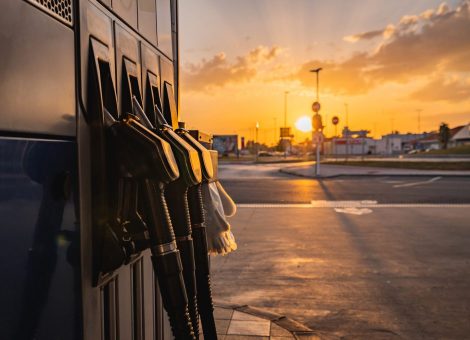Bitcoin ATM: opportunity or risk?
New products and trends enter the market every day. How do you evaluate if a product is worthy of investment, which ones are right for your customers, and which present the most potential for your business? Kalibrate exists to create a world without guesswork, using data to inform decision-making – here we examine the rise of Bitcoin ATMs and how to determine whether they’re the right move for your convenience store.
As the cryptocurrency market continues to grow extensively and the rise in the installation of Bitcoin ATMs has become hard to miss, many business owners are wondering if a Bitcoin ATM is right for their business.
Over the last couple of years, Bitcoin has shifted rapidly into mainstream life, with more people becoming interested in investing in cryptocurrency. As of February 2022, there are reportedly over 50,544 bitcoin ATMs installed across the US. This number has risen by more than 20,000 ATMs compared to the previous year.
So why has the demand increased?
Crypto allows people to feel a rush of adrenaline which is fused by a feeling of high risk due to its volatility, and the potential for higher returns, compared to its counterpart, – which take a significantly longer time to yield a large return.
Roughly 3 in 10 (31%) Americans aged 18-29 say they have traded or invested in Bitcoin or other forms of crypto  — rising to 43% in men of the same age range. This generation, Gen Z, has significant spending power and are currently spending 125% more of their pre-covid spending levels.
How do Bitcoin ATMs work?
Bitcoin ATMs allow people who want to trade in cash for Bitcoin to do so. By using a QR code linked to their crypto wallet they can buy Bitcoin, or other crypto currency. The transaction is instantaneous and will appear in the wallet of the user within a couple of minutes, unlike the online exchange, it also provides more privacy. Using data to inform decision-making, we look at the opportunities and risks of installing Bitcoin ATMs in your store.
The opportunities
After installing a Bitcoin ATM you may find your store begins to rank higher on search engines. Many people are searching online for Bitcoin ATM locations with few c-stores and gas stations hosting them. This online presence allows you to begin to reach a different market and stay competitive whilst keeping in line with the current trends.
As your store will become more popular online you may begin to attract new people to the store who wouldn’t have initially made the trip, resulting in an increase in footfall. Once your Bitcoin investors are in the store you have the opportunity to cross-sell with the potential for an increase in return on investment.
The risks
Bitcoin ATMs are not connected to any banks and will not allow you to withdraw cash — taking up all the space of a regular ATM with fewer users.
Cryptocurrency is well known for being volatile, and with recent, highly publicized, crashes many business owners who have installed ATMs in their c-stores or gas stations and are now left nervous of their investment.
A word of warning
However, installing a machine is not without its risks. Due to the anonymity provided by the machines, Bitcoin ATMs are seen to promote fraudulent behavior. And while there are regulations for the machines — they aren’t always followed. Choosing a provider for your Bitcoin ATM can become a headache, with many providers not compliant with registering their machine with the financial crimes enforcement network, resulting in some ATM hosts losing millions of dollars in fraudulent transactions. If you are opting to install a machine, it is recommended that you make sure the company you choose is Bank Secrecy Act/Anti-Money Laundering compliant.
Understanding your customer profile to evolve your store offerings
It’s important to monitor and understand your demographic to determine whether installing a Bitcoin ATM will benefit or hinder your customers and their perception of your store. At Kalibrate we use data to make informed decisions.
Kalibrate’s mass mobile data reports are available on any gas station or convenience store, and the insight you receive will help you to better understand the demographic that you serve, to determine the right type of services for your customers. Find out:
- Full demographic summary for site visitors
- Lifestyle segmentation of your site visitors
- Number of visits by the hour or day
- Where your customers live, work and play
- And where they stop before and after visiting your store
Armed with information about the specific customers that you serve, you can confidently make the right choices about the products and services you offer within your store. You can get the insightful customer data that you need to learn who your customers are, to make informed data driven decisions and boost your return on investment.
Contact us to Request a Mass Mobile Data analysis
Read more articles about:
Location intelligenceSubscribe and get the latest updates
You may unsubscribe from our mailing list at any time. To understand how and why we process your data, please see our Privacy & Cookies Policy
Related posts
Fuel pricing
November 2025. Kalibrate's Canadian Petroleum Price Snapshot
Kalibrate conducts a daily survey of retail gasoline, diesel, propane, and furnace fuel prices in 77 Canadian cities....

Fuel pricing
October 2025. Kalibrate's Canadian Petroleum Price Snapshot
Kalibrate conducts a daily survey of retail gasoline, diesel, propane, and furnace fuel prices in 77 Canadian cities....

